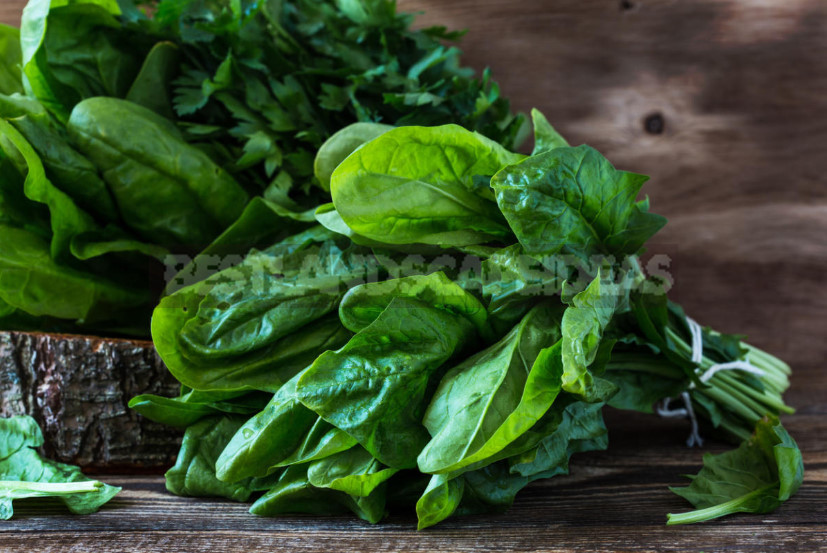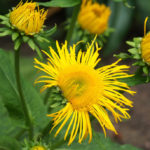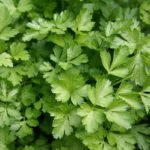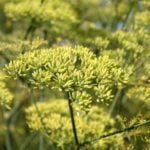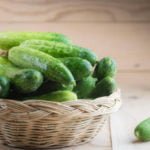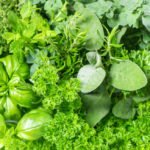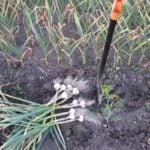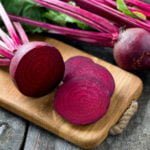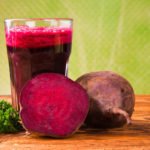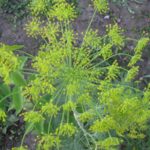One day during a hike friends gave me a very good meatballs with spinach and a delicious vegetable pie. After that, I realized what I was missing in life — spinach.
Spinacia oleracea
It is an annual (mainly dioecious) plant up to 30 cm high (together with a peduncle). Cold-resistant, moisture-loving. Leaves are triangular-spear-shaped. It is believed that spinach was brought to Europe from Asia Minor during the Crusades.

Spinach is not afraid of frost, so early spring can decorate the garden with beautiful leaves. It is an excellent ingredient for vitamin salads, pies, sauces, side dishes, mashed potatoes, smoothies.
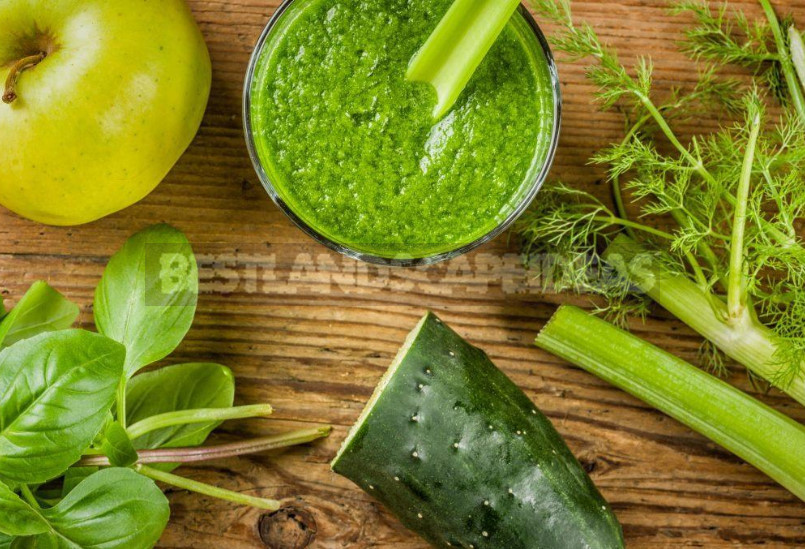
If you have in the country there is a high bed, for the early harvests of spinach on it-the place, because it-early maturing culture: the period of” readiness ” is 25-30 days. Those who love spinach, it is necessary to remember that ready meals should be stored in the refrigerator, as at room temperature they form toxic substances.
Consider the recipes of unusual dishes, which use some of the plants with spinach taste.
Atriplex hortensis
Well-known all annual plant up to 2 m.
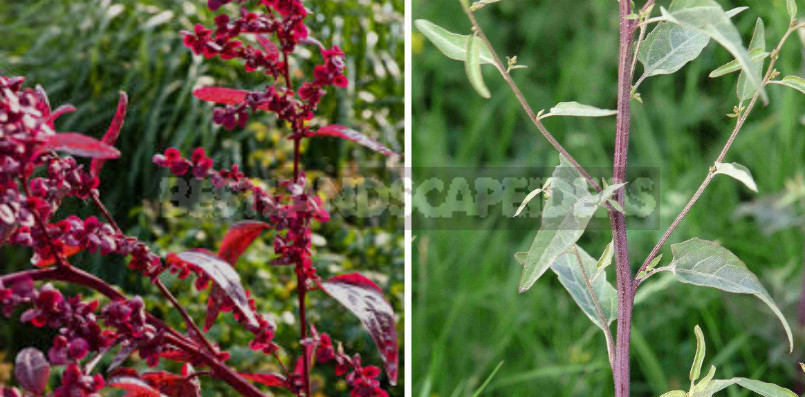
Atriplex hortensis-background plant, creating groups of Burgundy-beet and green. In respect of soils is not capricious. The large leaves of the latter are soft and juicy.
Caviar from Atriplex hortensis
To prepare you need:
- leaves and young shoots Atriplex hortensis-400 g;
- onions-1 piece;
- vegetable oil – 2 tablespoons;
- fresh tomatoes – 3 PCs;
- dry oregano-1 teaspoon;
- garlic-1 clove.
Cooking recipe:
- Atriplex hortensis mine, boil, mince.
- Finely chop the onion, fry until Golden brown, put Atriplex hortensis on it.
- Blanch the tomatoes, peel, finely chop and add to the onion and Atriplex hortensis.
- Simmer all 10-15 minutes on low heat. For 5 minutes before the end of adding oregano powder, stir.
- Remove from heat, add the crushed garlic, close the lid, cool.
At Atriplex hortensis is very similar to Chenopodium, and even botanists sometimes can not accurately determine which of them who. In fact, they are easy to distinguish by fruit:
- at Atriplex hortensis seed is surrounded by 2 fused bracts, often their edges form wings;
- in Chenopodium same seeds “naked”.
Chenopodium capitatum
Appeared on sale under the exotic name ‘Spinach-raspberry’. Found in Western Europe.
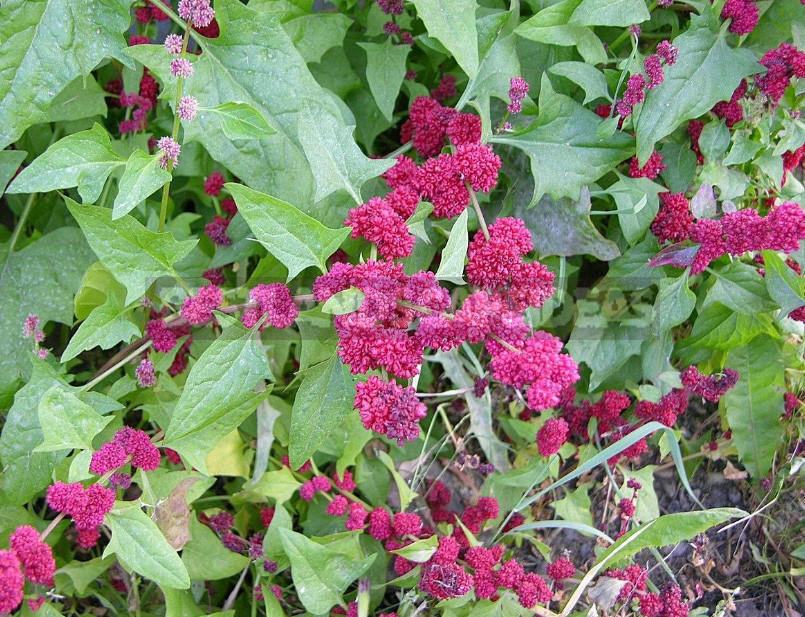
This is an annual plant 50-80 cm tall with erect, highly branched stem. The leaves are triangular. The fruits are red, fleshy, juicy. In the food use of young leaves (salads, soups, mashed potatoes, and so on), but fragrant and sweet fruit, taste is reminiscent of strawberries. However, some vegetable growers who have had time to grow and try it, note that Chenopodium capitatum has neither a decent spinach taste, nor decent fruits.
But the plant is very decorative! Especially delightful Chenopodium capitatum in fruiting. With such luxurious “berries” it is worthy of a Central place in the mixborder, which will support the red scale.
Chenopodium foliosum
Another Chenopodium, creeping on the ground.
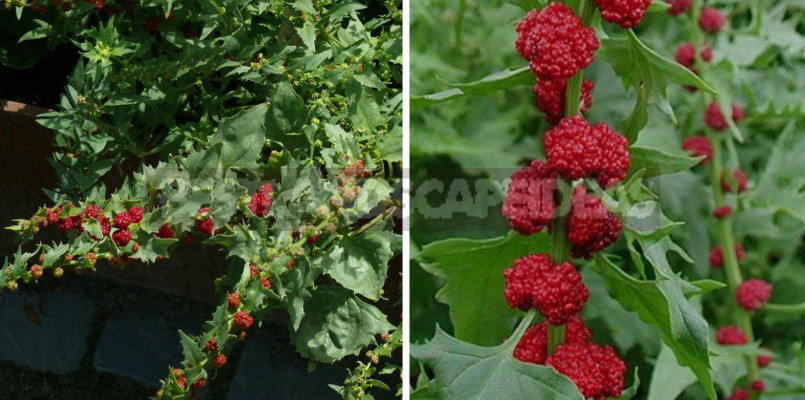
Leaves oblong-rhombic, large-serrated. Nondescript flowers are collected in balls. The fruits are bright red. In food use young leaves and shoots.
Malva neglecta
My generation is well aware of this low plant since childhood, as there was no child who would not have tried green fruit, which when ripe broke up into 14 fruitlets.
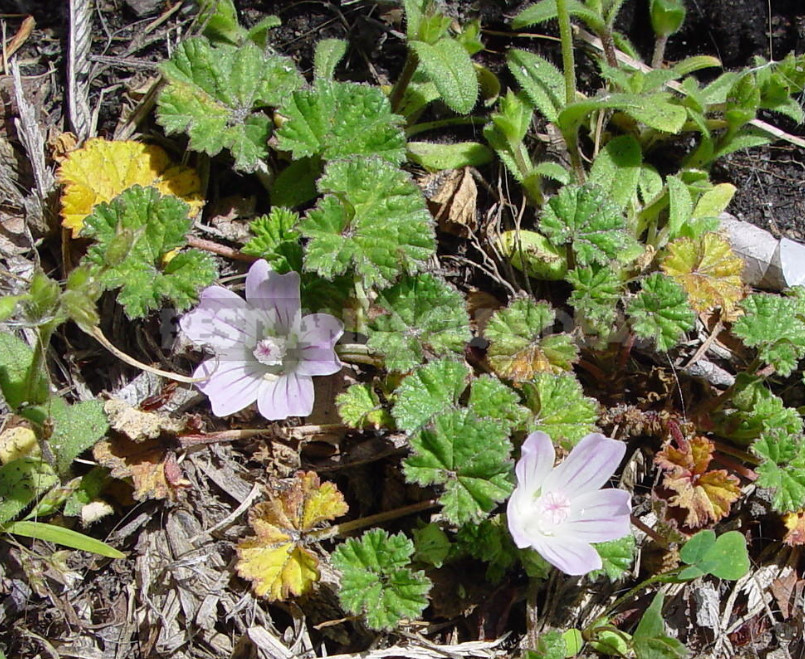
As a spinach plant, which was used in the food of young leaves, Malva was known in Ancient Greece, Rome. It’s a weed you have to fight, not grow.
Malva sylvestris
Before the introduction of spinach culture was the main spinach plant of medieval Europe.

In addition, Malva sylvestris is an ordinary Georgian spinach vegetable, the young leaves of which are widely used in rural nutrition. The plant has successfully taken root in flower beds. Malva is especially harmonious in mixborders rural style, where during flowering support pink.
Malva salad
To prepare you need:
- Malva-200 g;
- onions-1 piece;
- vegetable oil – 2 tablespoons;
- garlic-1-2 cloves;
- vinegar – 1 tablespoon;
- dill – 1 tablespoon.
Cooking recipe:
- Malva leaves are boiled in salt water.
- Finely chopped onions fry in oil, cool, mix with already chilled and chopped Malva.
- Add to taste dill, vinegar, put in the refrigerator for 1-2 hours.
Althaea officinalis
Do not ignore another member of the family Malvaceae — Althaea officinalis, who hurries to our aid in coughing.
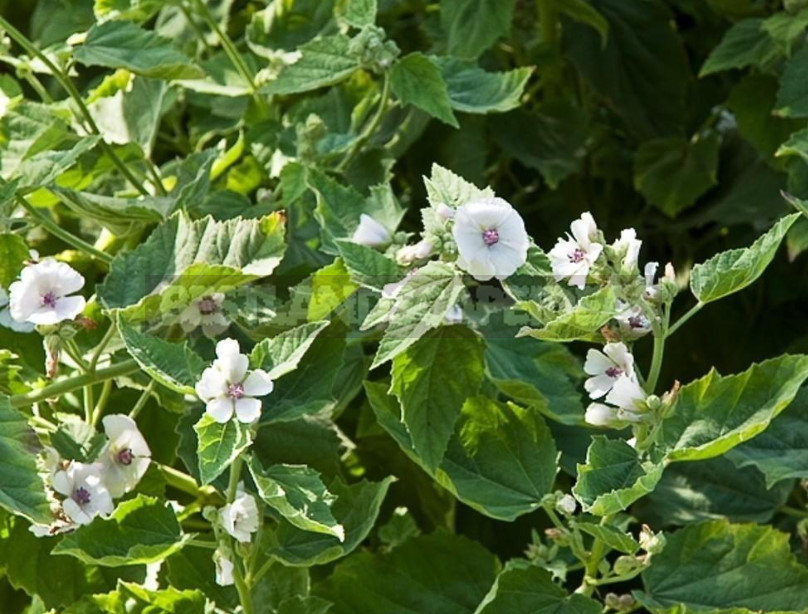
And for the salad, its young leaves (because of the thick pubescence) are not quite suitable, but boiled ones are tasty. High and loose plant will not get lost in the flower garden, and in the rural mixborder it will act even as a dominant, creating a pink scale. Althaea officinalis will be very harmonious in the group landings of the coastal zone of the reservoir.
Primula vulgaris
As a salad and spinach plant in England, Primula vulgaris leaves are used.
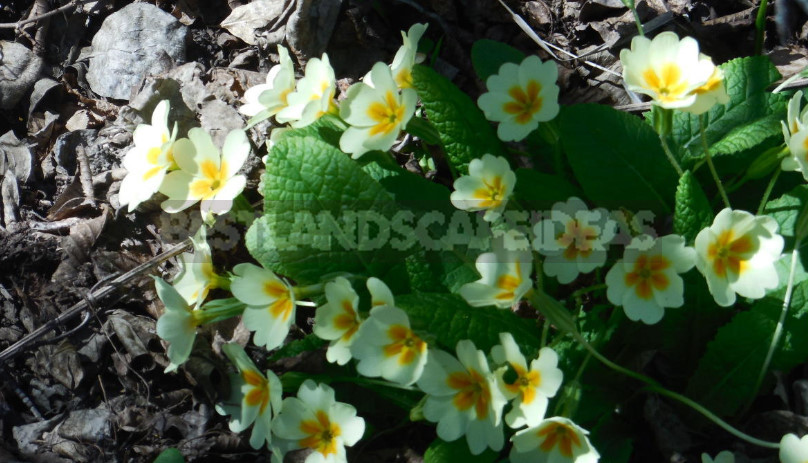
This is a low plant, thanks to the early leaves and flowers, loved by many gardeners. Despite the small size, primroses – spring dominants, attracting attention in the most shaded corners of the garden.
Pancakes with Primula vulgaris and lice
For preparations will need:
- Primula vulgaris leaves and wood lice-100 g;
- Primula vulgaris flowers-pinch;
- pancake flour-200 g;
- kefir-200 ml;
- egg-2 PCs;
- sugar – 2 tablespoons;
- salt-pinch;
- soda on the tip of the knife;
- vegetable oil-for roasting.
Cooking recipe:
- To flour add eggs, sugar, salt, kefir and knead the dough thoroughly.
- Add soda, finely chopped leaves, whole flowers.
- Mix everything, let stand in the heat for at least 30 minutes.
- Fry as ordinary pancakes.
- Serve hot, with sour cream.
Polygonum aviculare
True gourmets, leading a healthy lifestyle with a varied diet, will not pass by and well-known to all Polygonum aviculare – annual weed-cosmopolitan (plant, spread across all continents). Polygonum aviculare is characterized by great vitality and thirst for life.
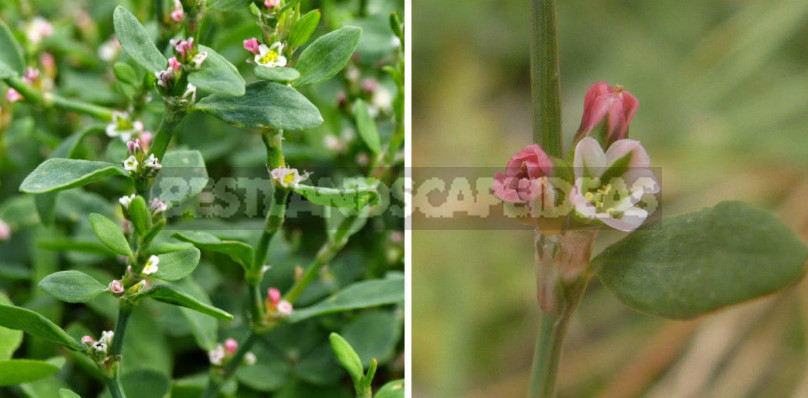
His young greens are like spinach. It is harvested before flowering plants.
Polygonum aviculare salad with tomatoes
To prepare you need:
- young leaves Polygonum aviculare – 250 g;
- tomatoes – 5 PCs;
- hard boiled eggs – 3 PCs;
- onions-1 piece;
- vegetable oil – 3 tablespoons;
- wine vinegar-2-3 tablespoons;
- cream or sour cream-1-2 tablespoons;
- horseradish grated-1 tsp.
Cooking recipe:
- Make sauce: mix vinegar, butter, cream, horseradish and finely chopped onion.
- Cut the eggs into slices, tomatoes into slices.
- All the ingredients are combined in one container, seasoned with sauce, mix.
I wonder if you eat spinach and spinach plants? Would you like to cook for yourself and your loved ones any of the dishes listed in the article?
